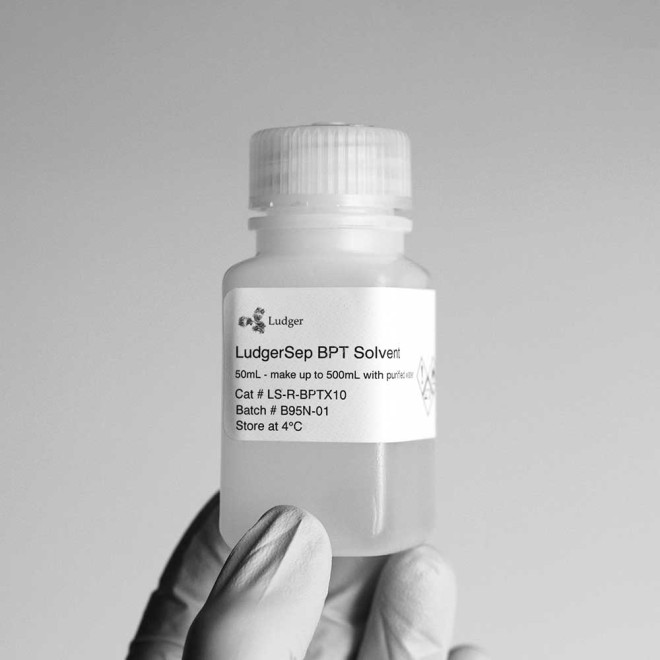LudgerSep R BPT solvent x10 concentrate
LudgerSep R BPT solvent x10 concentrate
- Product Code: LS-R-BPTX10
- Size 50 ml, makes 500ml solvent
- £155
50 mL of x10 LS-BPT (butylamine/orthophosphoric acid/tetrahydrofuran) solvent.
For preparation of butylamine/orthophosphoric acid/tetrahydrofuran solvent (BPT) used in monosaccharide HPLC analysis.
This can be diluted with water to prepare LS-N buffer (50 mM ammonium formate buffer, pH 4.4) used in amide or HILIC (hydrophilic interaction liquid chromatography) HPLC analysis of LudgerTag fluorophore and UV-chromophore labelled glycans.
Product Specifications
Application: For preparation of butylamine/orthophosphoric acid/tetrahydrofuran solvent (BPT) used in monosaccharide HPLC analysis.
Description: 50 mL of x10 LS-BPT solvent in a rectangular HDPE bottle with a leak-proof cap.
Usage: Dilute with de-gassed HPLC grade water use 1 bottle of LS-R-BPTX10 solvent to 450 mL of water. The 50 mL of x10 solvent will make 500 mL of BPT solvent. 500 mL of solvent should be sufficient for approximately 130 monosaccharide chromatography runs on a LudgerSepUR2 column. Use the LS-R-BPTX10 solvent for HPLC analysis with our monosaccharide analysis UHPLC column:
- LudgerSep™ UR2 UHPLC column LS-UR2-2.1x50
Storage: Store unopened bottle at 4 oC. As with any HPLC solvent we recommend preparation of the solvent immediately before use. Take care that the diluted solvent is not exposed to excessive heat or sunlight as it contains volatile components. Stability times of the prepared solvent will vary according to your laboratory conditions. Longterm storage of the prepared solvent, ie longer than 4 days, may result in evaporation of some of the volatile components in the solvent leading to a change in monosaccharide retention times.
Additional Reagents and Equipment Required
- Pure water: resistivity 18 M-cm, particle free (>0.22 m), TOC <10 ppb
- Volumetric flask
- De-gassing station for HPLC solvents*
* Optional - depending on your HPLC system
Safety and Handling
- Please read the Material Safety Data Sheet (MSDS) and instruction protocol given in this guide before using this product.
- All processes involving this reagent should be performed using appropriate personal safety protection - eyeglasses, good quality chemically resistant gloves (e.g. nitrile), etc. - and where appropriate in a laboratory fume cupboard.
- Ensure that any glass, plasticware or solvents used are free of glycosidases and environmental carbohydrates. Use powder-free gloves for all sample handling procedures and avoid contamination with environmental carbohydrate.



 Product guide
Product guide